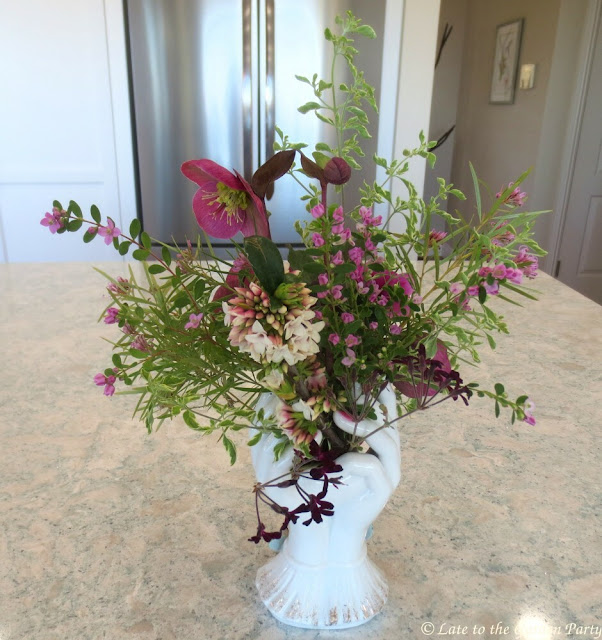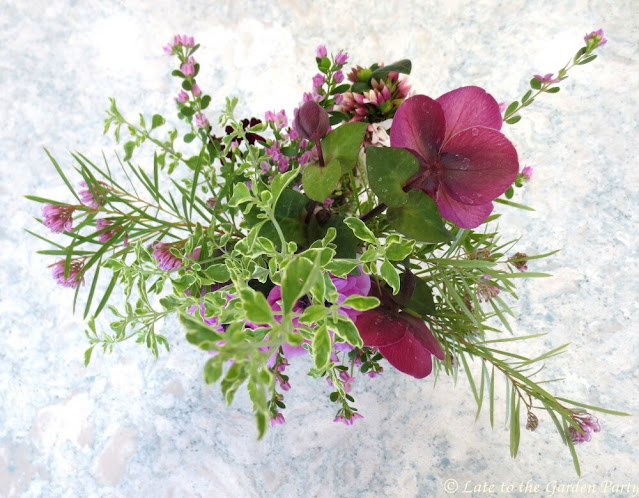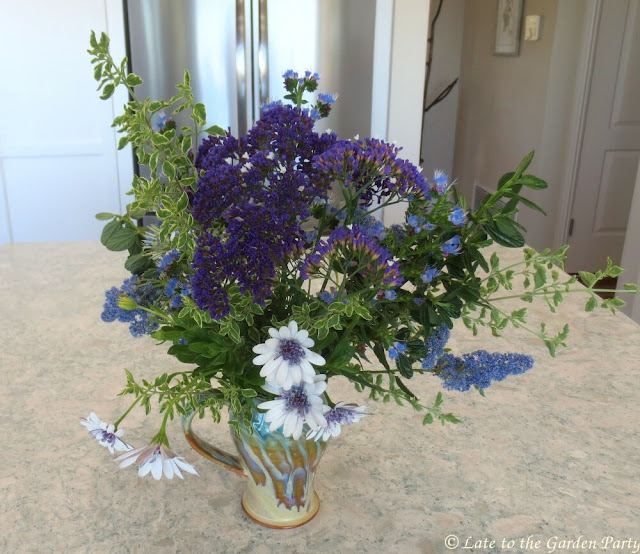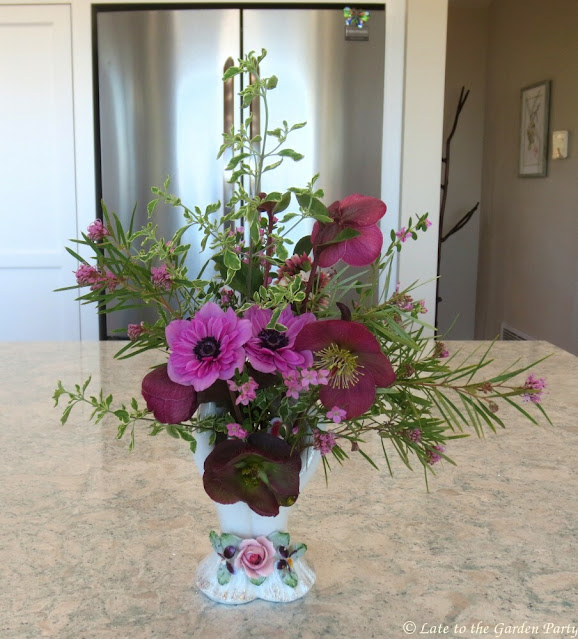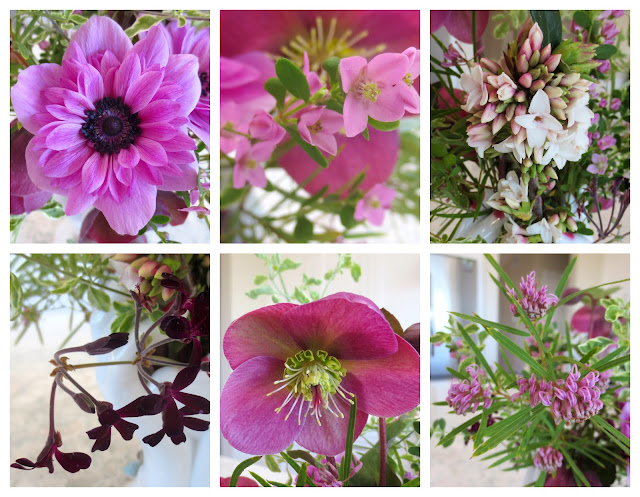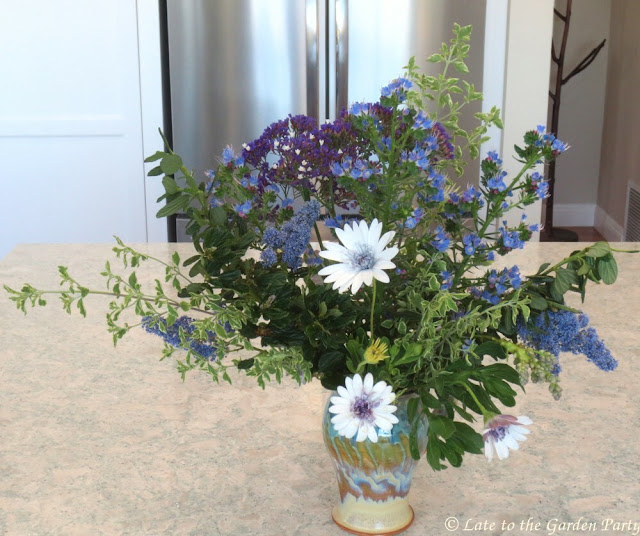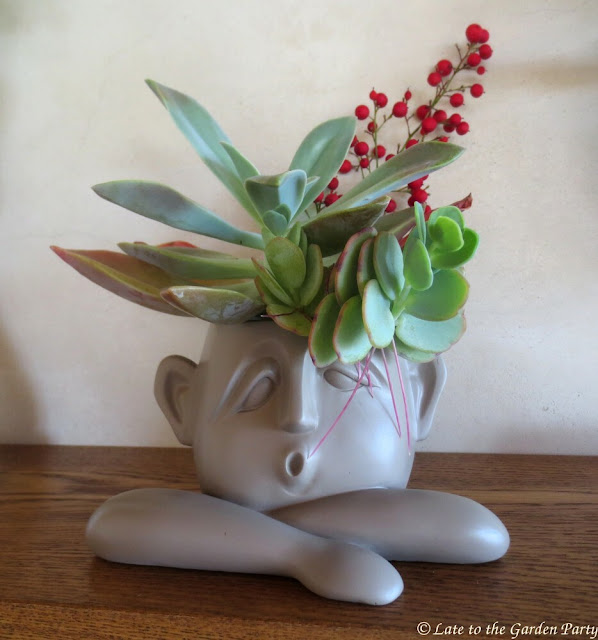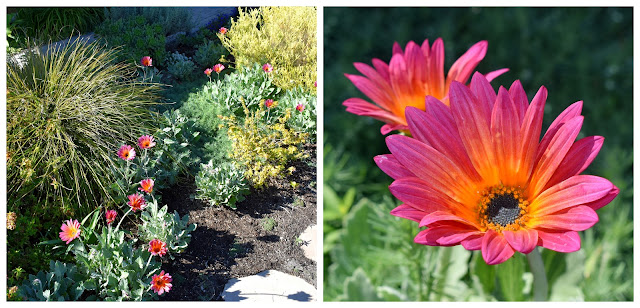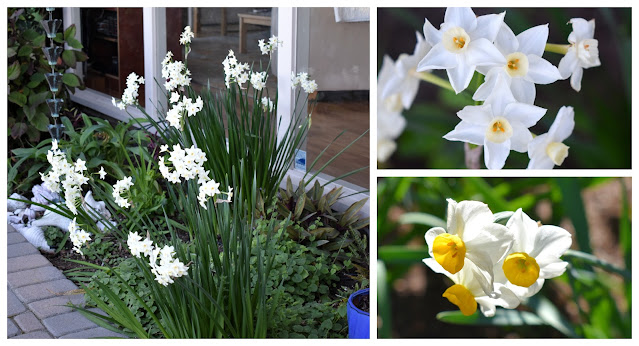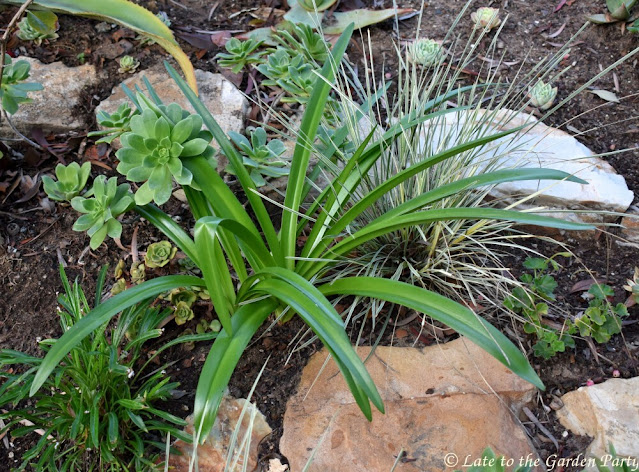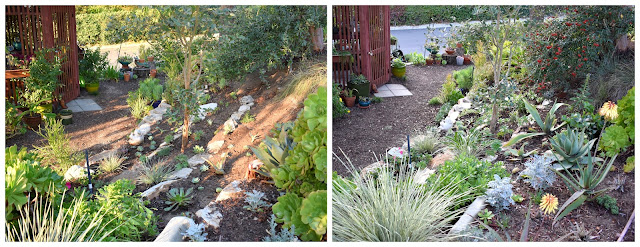I'm still trying to stay close to home to avoid unnecessary exposure to Omicron. This week's garden projects were a mixed bag. The one I got the most enjoyment out of involved a dried grape vine, my lath house, and a collection of Tillandsias (aka air plants)
The grape vine I inherited with the garden hasn't responded at all well to our drought. It produced only a few leaves last year. Apparently, it can't get by on four inches of annual rain. As the birds got 95% of the grapes it produced even during its good years, I didn't go out of my way to save it either. I started cutting it back several weeks ago with the intention of removing it but saved an attractive piece of the woody vine with the vague notion of using it in some fashion somewhere else in my garden. I fiddled with it a bit before positioning it above one of the windows in the lath (shade) house my husband built me in 2018, deciding it would be perfect to display Tillandsias.
 |
| Here's what it looked like on my first pass. I used 6 Tillandsias I already had on hand in various corners of my garden and wired them to the vine. |
 |
| If I ever had the species names for any of these, I've long ago lost them |
It looked too bare to me like this so I made a trip to my local garden center earlier this week, my first visit in quite awhile, to see if they had any air plants. They did!
 |
| These are my most recent purchases, which ranged in price from $3.99 to $12.99. Only 2 were sold with species names attached. |
 |
| I attached the largest plant, a Tillandsia capitata 'Peach' (upper left), to the grape vine's base on the outside of the lath house. Three more were wired to the vine inside. The two with flower buds were unidentified but the other (lower right) is Tillandsia stricta, which was "enhanced" with red color by the seller. |
 |
| This is version #2 of my new lath house feature. The smallest Tillandsia was too delicate to wire in place so it's sitting in a pot alongside another plant for now. It remains to be seen how well everything holds up against the worst of our Santa Ana winds. |
I also picked up a new Cryptanthus (aka earth star) while at the garden center, which I potted up and added to my lath house plant collection.
 |
| This is Cryptanthus 'Strawberries Flambe' |
While puttering in the lath house I decided to rehab a pot I'd had there for a few years.
 |
| I put together the succulent pot within a pot in December 2018 (left) after seeing similar creations on Instagram. By late last year, almost all the succulents had withered away and it looked sad. I created a new version (right) using cuttings from my garden and just a few of the original succulents. |
I replanted another succulent container while I was at it, which now sits outside the lath house with a collection of other pots.
 |
| The original contents of this container drowned during December's heavier-than-usual rainstorms. I had my husband drill additional holes in the bottom of the pot before replanting. The contents include Graptoveria 'Fred Ives', G. 'Debbie', Crassula capitella, Echeveria parva, and a couple cuttings of Crassula multicava. |
This group of plants received by mail order late last week were promptly planted.
 |
Top row: Campanula persicifolia, Lavandula 'Phenomenal', and Fuchsia mangellanica 'Hawkshead'
Middle row: 3 Salvia sclarea
Bottom row: Graptopetalum 'Pinky' and Delphinium elatum 'Morning Lights' |
 |
| The new plants don't look like much yet. I covered the 3 Salvias with wire cloches on the odd chance the rabbits might eat them to the ground. |
I don't always get my new purchases planted so quickly.
 |
| The 3 potted Pilosocereus azureus shown on the left were purchased on sale at a local garden center back in early November but they only went into the ground last Saturday after I made space for them by pulling out a sprawling and ungainly Maireana sedifolia. |
I've still got a few plants picked up during this week's visit to the garden center to get into the ground this weekend.
 |
| This Aloe maculata is destined for the back slope |
 |
| I'm in the process of cleaning out some of the plants on the lower portion of the slope to make room for more succulents like the Aloe. I dug out a very unhappy Carpenteria californica (bush anemone) this week. As it turns out, fire ants are less likely to be active when temperatures are below 70F so I'm taking advantage of their absence while I can. |
Although I'd love to see some rain soon, I admit that the weather here is currently perfect for working in the garden, at least when the winds aren't blowing. I know that many of you in the Northern Hemisphere aren't nearly as lucky. I hope you enjoy the weekend however you spend your time.
All material © 2012-2022 by Kris Peterson for Late to the Garden Party
